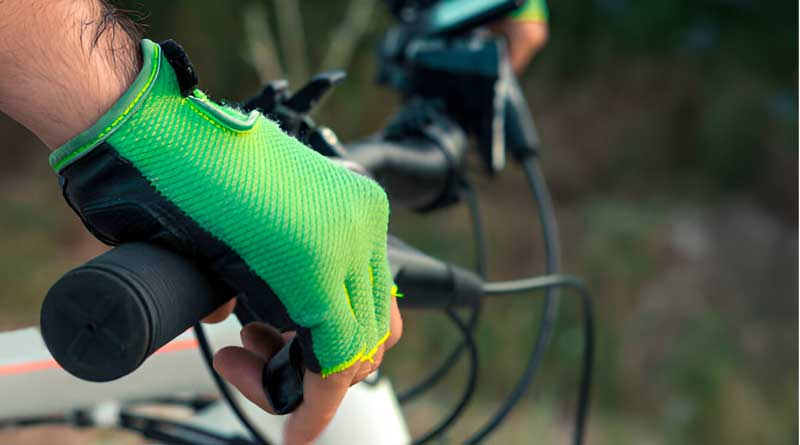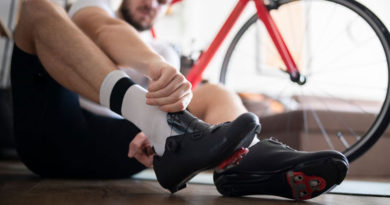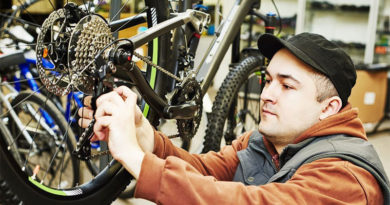How to Raise Handlebars on Mountain Bike?
Raising the handlebars on your mountain bike can improve comfort and control while riding. It’s a simple adjustment that can make a big difference. Whether you want a more upright position for better posture or to reduce back pain, adjusting the height of your handlebars can help. Over time, as you get used to your bike, you might find that the handlebars are too low or high for your ideal riding style. This guide will walk you through easy steps to raise your handlebars. By the end, you’ll feel more comfortable on your bike and have a better riding experience.
Why Raising Handlebars Matters
When your handlebars are too low, you lean forward more than you should. This makes your back and neck feel strained. Over time, this posture can cause pain and discomfort. Raising the handlebars can solve this problem. It helps you sit straighter and makes long rides easier.
Higher handlebars give you better control on smooth roads. They also reduce wrist and shoulder pressure. If you enjoy casual riding rather than racing downhill, higher handlebars are often the best choice. Adjusting the handlebars is an easy job. You can do it at home if you have the right tools.
Understand Your Bike’s Handlebar Type
Before you raise the handlebars, you need to know what type of stem your bike uses. The stem is the part that connects the handlebars to the bike’s frame. There are two main types of stems. One is called a “threadless stem” and the other is called a “quill stem.”
A threadless stem sits on the outside of the fork tube. This type is common on most modern mountain bikes. A quill stem fits inside the fork tube and is common on older bikes. Knowing the stem type will help you understand how to adjust it.
Tools You Will Need
You do not need many tools to raise the handlebars. For most bikes, a set of Allen wrenches is enough. Some bikes may also need a wrench for bolts. You should also have a bike stand or a way to hold your bike steady. Working on a moving bike can be dangerous.
How to Raise Handlebars with a Threadless Stem
If your mountain bike has a threadless stem, the process is simple. First, you need to loosen the bolts on the side of the stem. These bolts hold the stem in place. You will also need to loosen the bolt on the top cap. Once the bolts are loose, you can lift the stem off the fork tube.
You will see spacers on the fork tube. Spacers are round rings that sit below and above the stem. You can move these spacers around to raise or lower the handlebars. If you want the handlebars higher, move some spacers from the top of the stem to the bottom. Then place the stem back on the fork tube and tighten the bolts.
Make sure the handlebars are straight before tightening the bolts fully. The front wheel and handlebars should face the same direction. After adjusting, check the bolts once again to ensure everything is tight.
How to Raise Handlebars with a Quill Stem
If your mountain bike has a quill stem, the process is different. First, look for the bolt on top of the stem. Use an Allen wrench or regular wrench to loosen this bolt. As you loosen the bolt, you can pull the stem upward. Be careful not to raise it past the “minimum insertion” mark. This mark shows how high the stem can go safely.
Once you raise the stem to the height you want, tighten the bolt back down. Make sure the handlebars are straight before fully tightening. This adjustment gives you a more upright and comfortable riding position.
Consider Handlebar Risers
Sometimes, the standard stem adjustment is not enough. If you need the handlebars much higher, you can buy handlebar risers. These are special bars designed to sit higher than regular ones. Handlebar risers can add more height without changing the stem.
Installing risers is also simple. You remove the old handlebars and attach the riser bars in their place. Always make sure the new bars are secure before riding. Riser bars are great for people who want a relaxed, upright posture while riding.
Test Your New Handlebar Height
After raising the handlebars, always test your bike before going on a long ride. Sit on the bike and check if you feel comfortable. Make sure your arms are slightly bent, not stretched out. Your wrists should feel relaxed, and your back should stay straight.
Ride around the block to check your control. If you feel any discomfort, stop and adjust the handlebars again. Small changes can make a big difference. Never ride with loose bolts or misaligned handlebars. Safety should always come first.
When to Adjust Handlebars
You should adjust your handlebars any time you feel discomfort during rides. If your back, neck, or wrists hurt, check the handlebar height. You should also adjust the height if you change your riding style. For example, racing and off-road biking need different handlebar positions than casual street riding.
Handlebar height can also change over time if you replace bike parts. New tires, seats, or frames can affect your posture. It is always a good idea to check the handlebar height when making other changes to your bike.
Benefits of Proper Handlebar Height
Raising your handlebars can make your rides more fun and less painful. A higher handlebar can reduce strain on your neck and shoulders. It can also improve your balance, especially during slow rides. A comfortable posture helps you stay on your bike longer without feeling tired.
For mountain biking, a higher handlebar position can also help you control the bike better on flat or uphill roads. If you enjoy downhill racing, a lower handlebar may be better for sharp turns. But for most people, a raised handlebar gives better comfort and safety.
Best Handlebars for Mountain Bike
1. Ritchey Handlebar
-
Material: Aluminum alloy
-
Width: 400mm – 460mm
-
Drop: 125mm
-
Reach: 80mm
The Ritchey Handlebar is a reliable and lightweight choice for road cyclists looking for durability and comfort. Made from aluminum alloy, this handlebar offers a balance between performance and weight, making it suitable for both beginners and experienced riders. The 125mm drop and 80mm reach provide an ergonomic position that reduces fatigue during long rides. The versatile width range allows for customization based on rider preferences, giving cyclists more control over their positioning and comfort.
The Ritchey handlebar also boasts a modern design, with a smooth, sleek finish that reduces air resistance, making it an excellent choice for competitive road cyclists. Its solid construction ensures that it can handle the stresses of high-speed riding, offering stability and control on both flat roads and during descents. Whether you’re racing or enjoying a leisurely ride, the Ritchey Handlebar delivers performance where it matters.
Pros:
-
Lightweight and durable aluminum alloy
-
Ergonomic drop and reach for comfort
-
Versatile width range for different rider preferences
-
Sleek design reduces air resistance
Cons:
-
Not as forgiving on rougher terrain
-
Might be too stiff for some riders looking for more flex
2. MIAOLLUN Handlebar
-
Material: Carbon Fiber
-
Width: 380mm – 440mm
-
Drop: 140mm
-
Reach: 75mm
The MIAOLLUN Handlebar is an excellent choice for cyclists seeking a high-performance carbon fiber handlebar. The carbon construction makes it lightweight and responsive, ideal for riders who prioritize speed and agility. The 140mm drop and 75mm reach help create an aggressive yet comfortable riding position, especially on long-distance rides. The varying width options allow for customization to suit different riding styles and preferences.
Riders will appreciate the MIAOLLUN’s stiffness, which translates to efficient power transfer during sprints and climbs. However, it can be a bit harsh on rougher roads due to its rigid nature. Despite this, the carbon fiber construction absorbs some vibrations, providing a smoother ride compared to alloy handlebars. Overall, the MIAOLLUN Handlebar is an excellent choice for road cyclists looking for a competitive edge without compromising comfort.
Pros:
-
Lightweight carbon fiber construction
-
Stiffness provides excellent power transfer
-
Wide range of width options
-
Vibration damping for a smoother ride
Cons:
-
Might feel too rigid for riders who prefer more flexibility
-
Carbon fiber can be more susceptible to damage in crashes
3. SENQI Bike Handlebar
-
Material: Aluminum alloy
-
Width: 400mm – 420mm
-
Drop: 130mm
-
Reach: 90mm
The SENQI Bike Handlebar is designed to offer cyclists a balance of performance and comfort. Made from durable aluminum alloy, it is well-suited for both recreational and competitive riders. The handlebar’s 130mm drop and 90mm reach position the rider in a more aggressive stance, enhancing aerodynamics and power transfer, particularly during intense climbs and sprints. The width options of 400mm to 420mm offer versatility to accommodate various body types and riding styles.
The SENQI handlebar’s construction provides a solid feel, offering excellent control during high-speed descents. However, it may feel a bit heavy compared to other handlebars in its category, and the rigidity may not be suitable for those seeking more comfort on rougher roads. Despite these minor drawbacks, the SENQI Handlebar stands out as a reliable and affordable choice for cyclists who want a solid, no-frills component.
Pros:
-
Durable and strong aluminum alloy construction
-
Good balance between performance and comfort
-
Versatile width options
-
Solid control at high speeds
Cons:
-
Heavier than other handlebars in the same category
-
Can feel stiff on rough roads
4. FIFTY-FIFTY Mountain Bike Handlebar
-
Material: Aluminum alloy
-
Width: 750mm – 780mm
-
Rise: 25mm
-
Clamp Diameter: 31.8mm
The FIFTY-FIFTY Mountain Bike Handlebar is specifically designed for mountain bikers who need superior control and comfort over rough terrain. With its wide 750mm to 780mm width range and a 25mm rise, it ensures that riders have an upright position that reduces strain on the wrists and shoulders, especially during technical descents. The 31.8mm clamp diameter allows for a more secure fit on the stem, ensuring a stable ride even during aggressive maneuvers.
The FIFTY-FIFTY Handlebar is built to withstand the demands of mountain biking, providing an excellent grip and responsive handling. However, it may not be as suitable for road cyclists due to its wide dimensions and rise, which are more optimized for off-road use. Still, for mountain bikers, this handlebar is a solid choice for improving control and comfort.
Pros:
-
Wide range of widths for better control
-
25mm rise for a more comfortable riding position
-
Durable aluminum construction
-
Secure clamp diameter for stability
Cons:
-
Too wide for road bike use
-
Heavier than typical road handlebars
5. BICYCGEAR Handlebar
-
Material: Aluminum alloy
-
Width: 420mm – 460mm
-
Drop: 140mm
-
Reach: 80mm
The BICYCGEAR Handlebar is an excellent all-around option for road cyclists looking for performance and comfort. Constructed from lightweight aluminum alloy, it provides a sturdy and durable feel. The 140mm drop and 80mm reach offer a comfortable yet aggressive riding position, making it ideal for riders who frequently push their limits. Its width options from 420mm to 460mm allow for a personalized fit based on rider preference.
While the BICYCGEAR handlebar excels in its design and construction, some riders may find it less forgiving over long periods due to its stiff frame. On smoother roads, however, it offers a responsive ride with improved aerodynamics. Overall, it’s a solid, mid-range handlebar that balances performance with comfort for cyclists who want to go the distance.
Pros:
-
Lightweight and durable aluminum construction
-
Comfortable drop and reach for performance
-
Customizable width options
-
Good balance between comfort and performance
Cons:
-
Can feel too stiff for some riders
-
Not as ideal for rough road conditions
6. GEWAGE Mountain Bike Handlebar
-
Material: Aluminum alloy
-
Width: 760mm – 780mm
-
Rise: 30mm
-
Clamp Diameter: 31.8mm
The GEWAGE Mountain Bike Handlebar is engineered for mountain bikers who need a robust and reliable handlebar for tough trails. The 760mm to 780mm width range offers excellent control, while the 30mm rise helps keep the rider in an upright position, reducing fatigue during long rides. The 31.8mm clamp diameter ensures a secure and stable fit on the stem, providing a smooth and responsive ride over varied terrain.
While the GEWAGE Handlebar excels in off-road performance, its design and dimensions may not be ideal for road cyclists looking for a more aerodynamic setup. It’s heavier than many road-specific handlebars, but this weight contributes to its durability, making it an excellent choice for rugged trails and technical descents. For mountain biking enthusiasts, it’s a great pick for comfort and control.
Pros:
-
Durable aluminum alloy construction
-
Wide width range for maximum control
-
30mm rise improves comfort
-
Secure clamp diameter for stability
Cons:
-
Heavier than road-specific handlebars
-
Not suited for road cycling
7. RXL Handlebars
-
Material: Carbon Fiber
-
Width: 380mm – 420mm
-
Drop: 125mm
-
Reach: 75mm
The RXL Handlebars offer a premium carbon fiber design that caters to serious cyclists seeking both light weight and durability. The carbon construction ensures minimal weight, making it an ideal choice for riders looking to improve their bike’s overall performance. With a 125mm drop and 75mm reach, these handlebars promote an aerodynamic and comfortable position, allowing for extended riding sessions without discomfort.
The RXL Handlebars are particularly well-suited for long-distance road cyclists who require a balance of strength and responsiveness. The carbon fiber material helps absorb vibrations, providing a smoother ride even on rougher roads. However, they may not be the best choice for beginners due to their stiff construction, which might feel uncomfortable at first. Overall, the RXL Handlebars are a great investment for experienced riders aiming to enhance their cycling performance.
Pros:
-
Lightweight carbon fiber construction
-
Excellent vibration dampening
-
Aerodynamic design for better performance
-
Durable and stiff for efficient power transfer
Cons:
-
Not ideal for beginners
-
Carbon fiber may be prone to damage in crashes
Final Thoughts
Raising your handlebars is one of the easiest ways to make your mountain bike fit you better. It does not take much time or skill. All you need are some basic tools and a little patience. Whether you have a threadless stem or a quill stem, adjusting the handlebars is possible at home.
Always remember to check the tightness of your bolts after adjusting. Make sure your handlebars and front wheel are aligned. After every change, take your bike for a short test ride to check comfort and safety.
A comfortable bike is a joy to ride. Handlebar height plays a big role in making sure your rides are smooth, safe, and fun. Adjust it when needed, and you will feel the difference with every ride.




